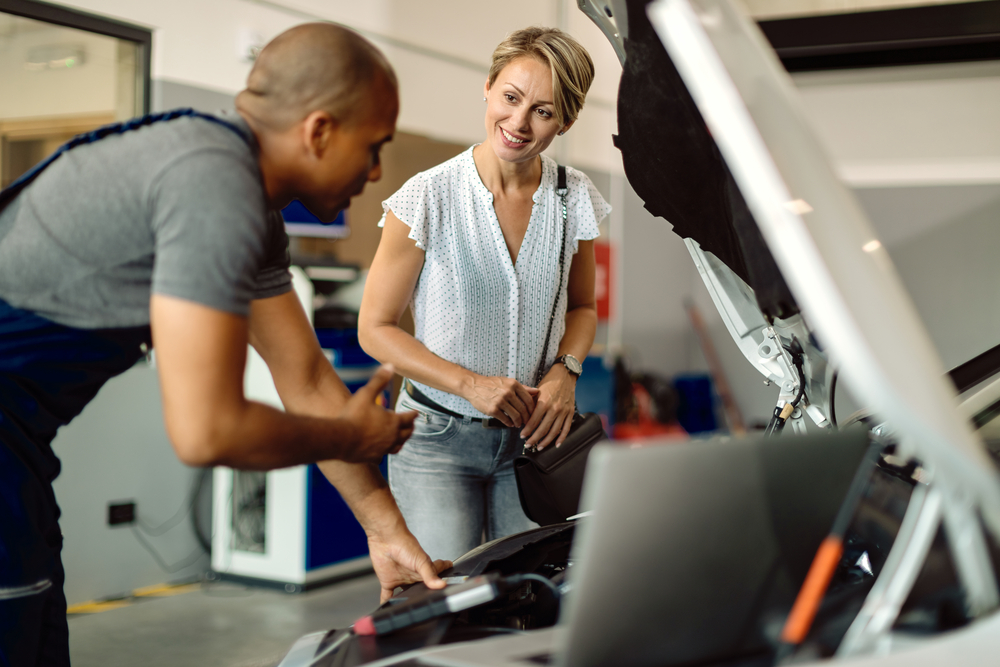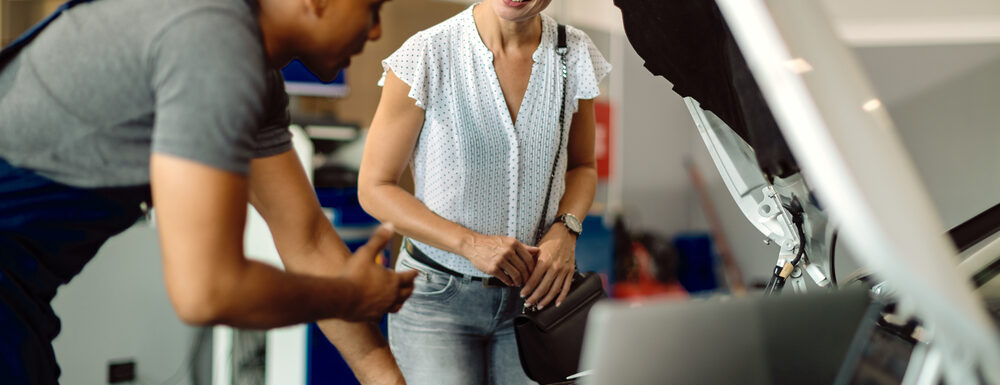 This week’s article is a guest post from veteran automotive customer experience expert, Laurie Down. She is the person who made all our customers happy at Beverly Hills BMW (ask anyone who worked with her). Since 1994, Laurie’s been a driving force in service departments, expertly juggling roles as manager, service advisor, and customer relations specialist – sometimes all of those three at once.
This week’s article is a guest post from veteran automotive customer experience expert, Laurie Down. She is the person who made all our customers happy at Beverly Hills BMW (ask anyone who worked with her). Since 1994, Laurie’s been a driving force in service departments, expertly juggling roles as manager, service advisor, and customer relations specialist – sometimes all of those three at once.
“You wanna go where everybody knows your name.”
This iconic line from the theme song of the beloved 80s sitcom Cheers encapsulates a universal human desire: to feel recognized, valued, and welcomed. It’s a sentiment that resonates not just in the realm of fictional Boston bars, but in every customer interaction across the business landscape. From quaint corner cafes to bustling department stores, from dental offices to car dealerships, the power of personal recognition can transform a mundane transaction into a memorable experience.
And it’s how I love to feel when I’m a customer at any business.
The simple act of addressing a customer by name is more than just good manners—it’s a powerful tool in the arsenal of customer experience. It’s a verbal embrace that bridges the gap between service provider and client, creating an instant connection that can set the tone for the entire interaction. This personal touch isn’t just about making customers feel good; it’s about creating lasting impressions and building relationships that can drive business success.
Consider the psychology behind hearing one’s own name.
Studies have shown that when we hear our name, it activates specific regions of our brain, including areas associated with self-perception and social cognition. This neurological response underscores why personalized service feels so rewarding—it speaks to our innate need for recognition and belonging.
But the impact of using a customer’s name goes beyond mere psychology. It’s a cornerstone of what experts call “relational marketing,” an approach that focuses on cultivating long-term customer relationships rather than pursuing short-term sales.
By making customers feel known and valued, you can foster loyalty that transcends individual transactions.
The beauty of this approach lies in its simplicity and universality. Whether it’s a first-time visitor or a loyal customer on their tenth visit, hearing their name accompanied by a warm smile and genuine body language can work wonders. It breaks down barriers, puts customers at ease, and creates an atmosphere of trust and openness. This initial rapport can be the difference between a one-time sale and a lifelong customer.
The effect of personalized service extends beyond the immediate interaction.
When customers feel welcomed and appreciated, they’re more likely to relax and engage fully with what your Service Dept. has to offer. This relaxed state allows your team to focus on showcasing products and services effectively, opening up opportunities for upselling and cross-selling that might otherwise be missed.
But personalization isn’t just about the initial greeting. It should permeate the entire customer journey, from the moment they enter the service drive to when they pick up their car.
As customers depart, the same level of attention and care should be maintained. A heartfelt goodbye, coupled with sincere gratitude for their visit, leaves a lasting positive impression. This final interaction is crucial—it’s often the part of the experience that customers remember most vividly (and tell their friends and family about).
Implementing this level of personalized service requires commitment to customer-centric culture.
- Mentorship and training across all levels of an organization are crucial. It’s not enough for front-line staff to memorize names; they must be empowered to create genuine connections with customers.
- Developing training programs that focus on emotional intelligence and interpersonal skills.
- Utilizing technology, like a customer relationship management (CRM) system to track customer preferences and history.
And personalization goes beyond just using names. It involves remembering customer preferences, anticipating needs, and tailoring services to individual tastes.
Personalization in action.
As I write this, I’m reminded of a young customer who was very good about getting his car serviced. He came in for every recommended maintenance and always made sure his car was in top shape.
One day, when he arrived in the service drive, I could see he was stressed. He mentioned that he was running late, which meant that he would be late for school. I told him, “Don’t worry, I’ll write you a note.” This brought a huge smile across his face. From that point on, we developed a bond and he always made sure his service appointments were with me.
These small touches can make customers feel truly valued and understood.
Even if they don’t purchase anything you have to offer today, you will definitely be planting the seed for future visits.
Balance technology with personal service.
With all these digital ways to communicate, where many interactions are increasingly automated and impersonal, the human touch becomes even more valuable. Dealers that can combine the efficiency of technology with the warmth of personal service are likely to stand out from the competition.
But it’s uber-important to strike the right balance. Overfamiliarity or forced friendliness can be off-putting to some customers. The key is to read social cues, which is why I advocate for mentoring and training. Respecting individual boundaries while maintaining a consistently welcoming attitude is not a skill that everyone possesses.
Some techniques learned in training programs:
- Practice active listening to better understand customer preferences.
- Develop emotional intelligence to read social cues accurately.
- Cross-cultural awareness: Learn about different cultural norms and expectations in customer service.
- Work on managing one’s own emotions to remain calm and professional in challenging situations.
- Study body language and non-verbal communication.
- Learn to modulate tone and language based on customer responses.
Show customers they are more than just a transaction.
As dealership service departments strive to differentiate themselves from large-chain repair shops, the power of personalization cannot be overstated. I mean, have you been to a large-chain shop lately? NOBODY knows your name!
Small gestures like remembering how they like their coffee or that they have a kid in college are simple yet profound ways to show customers that they’re more than just a transaction. They’re valued individuals whose patronage is genuinely appreciated.
In conclusion, while not every business can be Cheers, every business can aspire to create an environment where customers feel known, valued, and welcomed.
By embracing the power of personalization, dealers can create experiences that resonate with customers long after they’ve left the dealership. And as they depart, with a smile on their face and warmth in their heart, they’ll know they’ve been somewhere special—a place where “everybody knows their name.”

If you’ve gotten this far, you might like my Kruse Control Newsletter. Get my latest car biz CFO insights, tips, exclusive content, and a bit of fun straight to your inbox. Sign up now – it’s free!
